Key points
- The Sun is our nearest star. It is a yellow dwarf star and is found at the centre of our solar system.
- The Sun is composed mostly of hydrogen and helium and it releases energy because of nuclear fusionA type of nuclear reaction in which two lighter atoms are joined to make a heavier atom, releasing a large amount of energy in the process..
- The Sun will eventually run out of hydrogen and stop releasing energy.
- The changes that a star goes through during its ‘lifetime’ depend on the massA measure of the amount of matter an object is made out of. Mass is measured in kilograms (kg). of the star.
Stars and galaxies
Stars
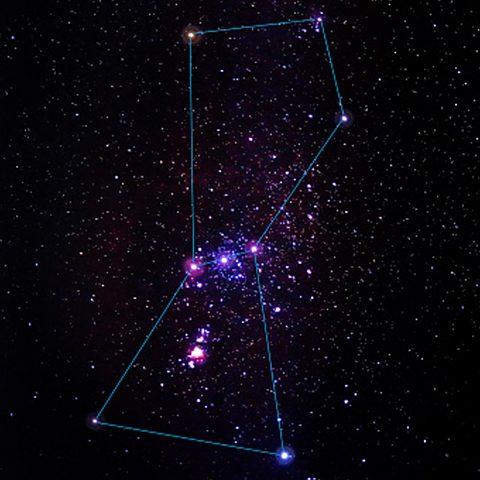
Looking at the night sky, it is possible to see many thousands of stars with the naked eye alone. You can see many more using a pair of binoculars or a small telescope.
The actual number of stars in the night sky is more than you could ever see. The European Space Agency (ESA) estimate that there are about 100 thousand million stars in the Milky Way alone.According to Brian Greene (theoretical physicist), if you were to hold your thumb up to the night sky at arms length, you are estimated to be covering around 10 million galaxies.
Different types of star vary enormously in brightness, size, massA measure of the amount of matter an object is made out of. Mass is measured in kilograms (kg). and colour. Each star goes through numerous stages that change their properties, as they move through their lifecycle.

The Sun
Our nearest star is SunThe Sun is a star at the centre of our solar system. The Sun is the nearest star to the Earth. It is a yellow dwarf star that gives off different types of energy such as infra-red energy, ultraviolet light, radio waves and light., a yellow dwarf star which is found at the centre of our solar system. The Sun appears larger and brighter than other stars because it is so much closer to us, even though it is only an average sized star. The biggest stars are more than 100 times as massive as the Sun, and the smallest stars are less than one tenth as massive as the Sun.
The relative size of the Sun
Galaxies
Our star is just one of around 100 billion stars in our galaxyA collection of millions or billions of stars, together with gas and dust, held together by gravitational attraction. , the Milky WayThe galaxy our solar system is located within. The Milky Way contains hundreds of billions of stars like our Sun. Earth is located about halfway between the centre of the Milky Way and its outer edge.. The Milky Way is a spiral galaxy, like the one shown in the image below.
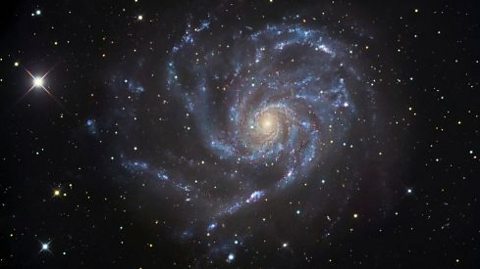
Looking at the night sky from a location with little light pollution, you can see a light-coloured strip across the night sky. When you are looking at this, you are looking through the disc of the Milky Way, and at thousands of millions of stars.
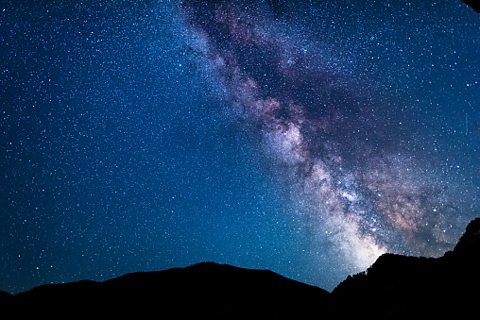
Star formation
Stars form from massive clouds of dust and gas, known as nebulae. Gravity pulls the dust and gas together and this compresses the gas, causing the temperature to rise.
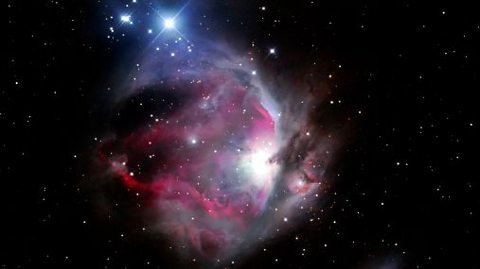
When the gas gets hot enough, nuclear fusionA type of nuclear reaction in which two lighter atoms are joined to make a heavier atom, releasing a large amount of energy in the process. reactions start, which produce light and heat.
The star will continue to release energy for many millions of years. This stage of the lifecycle of the star is called the main sequenceThe stable phase of a star’s lifecycle. The Sun is in its main sequence phase. stage.
Our Sun is currently in the main sequence stage.
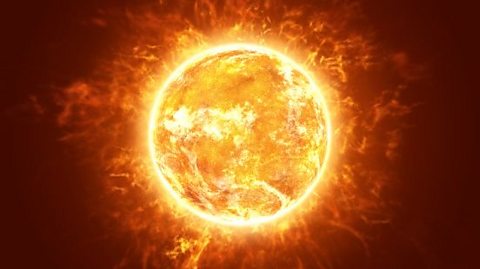
What happens at the end of the life of a star?
When a star has used up most of the hydrogen in its core, it cannot carry on releasing energy by nuclear fusion. Small stars like the Sun will change in size and reduce in temperature until they eventually stop releasing energy and become a black dwarf starThe leftover core of an exploded star, which was previously a white dwarf, but has cooled down enough that it no longer emits light..
Stars which have a much bigger mass than the Sun go through a different sequence of changes at the end of their lives, and this can result in a huge explosion called a super novaA powerful explosion, at the end of red supergiant phase of a high mass star’s lifecycle. Afterwards, they can become a neutron starA massive and very compact star. A high mass star, which is not quite massive enough to form a black hole, becomes a neutron star at the end of its lifecycle. or a black holeA region of space where gravity is so strong that not even light can escape. Black holes are the final stage of the lifecycle of the largest stars..
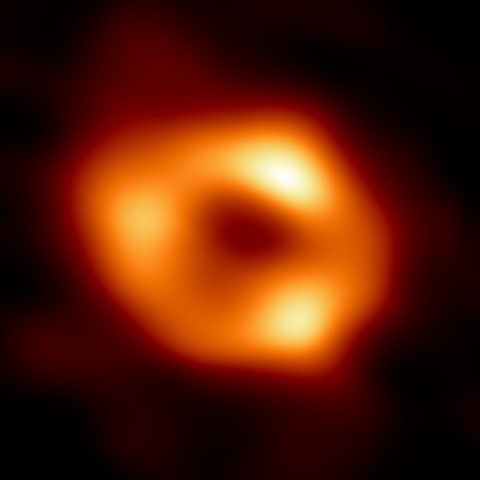 Image source, EHT Collaboration
Image source, EHT CollaborationHow compact is a neutron star ?
A neutron star has so much mass squeezed into such a small volume that a teaspoon of material from a neutron star would have a mass of around 5 billion tonnes!
Life cycle of a high mass star
High massA measure of the amount of matter an object is made out of. Mass is measured in kilograms (kg). stars go through a different series of changes to low mass stars, as they progress through their lifecycle, eventually forming a black holeA region of space where gravity is so strong that not even light can escape. Black holes are the final stage of the lifecycle of the largest stars. or a neutron starA massive and very compact star. A high mass star, which is not quite massive enough to form a black hole, becomes a neutron star at the end of its lifecycle. .
Just like a low-mass star, a high-mass star expands and cools at the end of its main sequence (stable) phase, becoming a red supergiant starA very large, red star. Red supergiants form after the main sequence stage, in a high-mass star’s lifecycle.. After this, a powerful and highly luminous explosion occurs, known as a super novaA powerful explosion, at the end of red supergiant phase of a high mass star’s lifecycle.
Why are black holes so black?
Black holes get their name because their gravity is so strong (even stronger than a neutron star) that not even light can escape their gravitational pull.
Test your knowledge
Play the Atomic Labs game! gamePlay the Atomic Labs game!
Try out practical experiments in this KS3 science game.

More on Space
Find out more by working through a topic
- count3 of 9

- count4 of 9
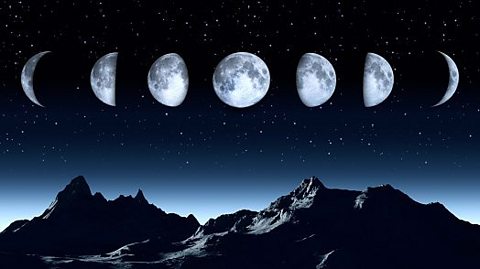
- count5 of 9

- count6 of 9
